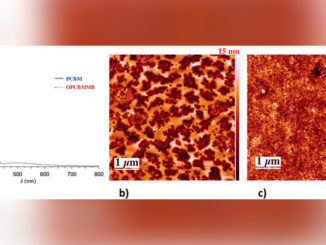
Writers: Larissa H. Oliveira; Ana Paula de Moura; Elson Longo; José A. Varela; Ieda L.V. Rosa
Keywords: Rare earth alloys and compounds; Chemical synthesis; Optical properties
Abstract: Rare earth complexes (RE) can be incorporated in silica matrixes, originating organic/inorganic hybrid materials with good thermal stability and high rare earth emission lines. In this work, the hybrid material was obtained by the polymeric precursor method and ultrasonic dispersed with spherical silica particles prepared by the Stöber Method. The Raman spectra indicated that the Eu3+ ions are involved in a polymeric structure formed as consequence of the chelation and polyesterification reactions of this ion with citric acid and ethylene glycol. After the ultrasonic stirring, 2-hydroxynicotinic ligand will also compose this polymeric rigid structure. The TGA/DTA analysis showed that this polymeric material was thermal decomposed at 300 °C. Moreover, this process allows the chelating process of the 2-hydroxynicotinic acid ligand to the Eu3+ ions. The 29Si NMR showed that the ultrasonic dispersion of the reactants was not able to promote the functionalization of the silica particles with the 2-hydroxynicotinic acid ligand. Moreover, heat treatment promotes the [Eu(HnicO2)3] complex particles incorporation into silica pores. At this temperature, the TGA curve showed that only the thermal degradation of ethylene glycol and citric acid used during the experimental procedure occurs. The silica and hybrid materials are composed by spherical and aggregated particles with particle size of approximately 450 nm, which can be influenced by the heat treatment. These materials also present an absorption band located at 337 nm. The photoluminescent study showed that when the hybrid samples were excited at 337 nm wavelength, the ligand absorbs the excitation light. Part of this energy is transferred to the Eu3+ ion, which main emission, 5D0 → 7F2, is observed in the emission spectrum at 612 nm. As the heating temperature increases to 300 °C, the energy transfer is more favorable. The lifetime values showed that the Eu3+ emission is enhanced due to the energy transfer process in the powders.
See PDF: Luminescent properties of hybrid materials prepared by the polymeric precursor method
DOI: 10.1016/j.jallcom.2013.06.051




